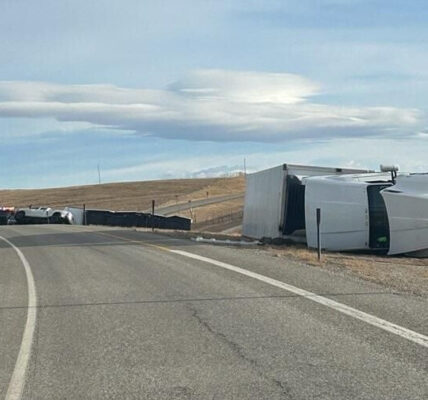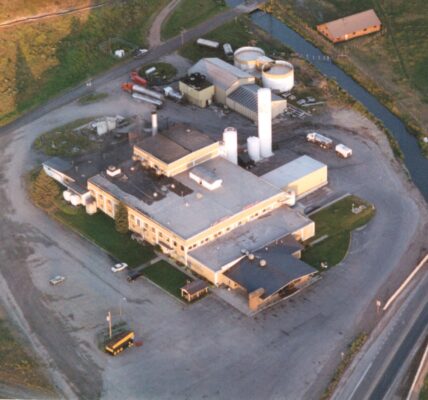• Alcohol, speed and disregard for traffic laws are a ‘daily occurrence’
The Logan to Jackson cycling race known as LOTOJA has been going through the area on the first Saturday in September for many years. The longest single-day race in the country, there are hundreds of riders and support vehicles that make their way through Star Valley on the route.
This past Saturday, a multi-vehicle accident occurred just south of The Wolf Den Motel and has lit the fuse on local fervor regarding the race as a result. However, according to law enforcement officers, the accident had nothing to do with the riders or support vehicles of the race and instead was the result of a much more common issue, driving while intoxicated.
• The Accident
According to Trooper Mike Merritt with the Wyoming Highway Patrol (WHP), one driver was arrested for allegedly driving drunk and causing the crash.
“The driver was traveling northbound and a witness behind him stated that he crossed the white line and then jerked into the southbound lane where he hit a silver minivan,” Merritt told SVI. “He glanced off of that collision and hit a second, nearly identical silver minivan which made for some confusing initial reports.”
The initial impact, described as an off-set passenger collision, injured all seven occupants in the first silver minivan. Six were transported to Star Valley Health (SVH) while one was flown from Alpine to Eastern Idaho Regional Medical Center (EIRMC) for her injuries.
There were no injuries reported from the people in the second minivan which swerved into oncoming traffic and “somehow missed everything” according to Merritt.
The alleged intoxicated driver veered off the road and sustained no injuries. He was taken to the Lincoln County Detention Center where he has been charged with four counts of Driving Under the Influence (DUI) with Serious Bodily Injury. The accident took place near River Ranch Loop. According to officials, two of the three vehicles were totaled.
• The Right to Ride
While initial opinions were that riders or drivers from the race were the cause of the accident, Trooper Merritt says he comes down on the other side of that statement.
“If the race wasn’t going this would have killed everybody because it slowed everybody down,” he said. “The tourists headed south were going about 40 miles per hour. The [alleged intoxicated driver] was going about 50 because of the race slowing them down. At highway speeds I think it would have killed the majority of the [occupants] in the van.”
RELATED: LINCOLN COUNTY SHERIFF SHANE JOHNSON –
For those who feel that it’s simply a matter of telling race organizers they are not allowed to ride through the area, Sheriff Shane Johnson clarified that position.
“I don’t know what right we have to tell people they can’t ride through here,” he said. “That doesn’t go along with anything that I’m aware of that we have the authority to do. The state statutes say that the bikers have the same rights and responsibilities of any other vehicle on the road. I get it, it’s an inconvenience but it is well-organized and they do a good job.”
Johnson also pointed out that there are always those who break the law and that there are steps for competitors to be disqualified should they do so.
“They have the ability to be in the traffic lane,” he said of the cyclists. “They are to stay to the right but they have a right to that lane as well. Those that are not following the law, there is a mechanism within the race to report those riders and they will be disqualified. Just like riders on a day to day basis, there are those who don’t follow the law.”
• An Old Problem That’s Getting Worse
Johnson stated the while the race is a one-day event that sheds light on traffic in the area, law enforcement is dealing with intoxication, higher speeds and broken traffic laws on a daily basis.
“We are having to deal with individuals who are intoxicated by mid-day,” he said. “People are driving faster and ignoring laws. Those are much bigger issues to us than the bike race. We’re seeing [DUI arrests] in the late morning and early afternoon. It’s not uncommon to have an arrest at 11 in the morning or 1 in the afternoon.”
In addition, Johnson stated that emergency personnel are not dealing with failure to yield on a single day of the year.
“We see it daily with lights and sirens,” he said. “In general we’re seeing people disregard traffic safety. It is not one Saturday a year, it’s daily. Of course it compounds it with that amount of traffic coming though but we are a major thoroughfare for tourism and have busy weekends all the time. I think it’s misdirected to blame on it the race. You can like it or not like it, I get it, but as far as telling them they cant ride through here I’m not sure what authority we have to do that.”
• Difference of Opinion at the Crash Site
A letter from members of the Mid-Valley Fire District volunteers was posted online from a volunteer responder stating several complications and obstacles that the entity had to overcome which was attributed to the riders and traffic associated with the race.
One portion of the letter stated that the accident required “three ambulances transporting nine patients and these ambulances had difficulty going to and from the scene. Competitors did not slow down or keep to the shoulder when being overtaken by emergency vehicles forcing them to take drastic maneuvers by slamming on their brakes to swerve into oncoming traffic lanes.”
The letter made recommendations that in the future that the LOTOJA organization address the following issues: “Require all competitors and support vehicles to follow all traffic laws. Don’t ride through an accident scene, stop when instructed, disqualify competitors and support vehicles for disregarding traffic laws and remove flashing lights from the top of support vehicles”
One big point of contention that has inflamed public opinion is the cyclists themselves riding through the scene. According to Merritt, this was done at his instruction.
“I told the cyclers to go through the crash scene,” he said. “Our local fire department disagreed with that. We diverted traffic from the road. Some came through the scene but they were told to come through the crash scene. That was my call.”
The southbound lane was shut down for approximately 30-40 minutes but according to Merritt, cars were eventually allowed to squeeze through while officials and responders finished their work.
Merritt acknowledged that passions were high on the scene and that things were more complex because of the additional traffic for the race, but he also noted that his interaction with those from the event was overwhelmingly positive.
“The racers were very thankful for us being there,” he added. “They were appreciative. They were overly nice compared to previous years. They did back up traffic a few times but the majority of that were the race Marshalls and motorcyclists and officials from LOTOJA.”





